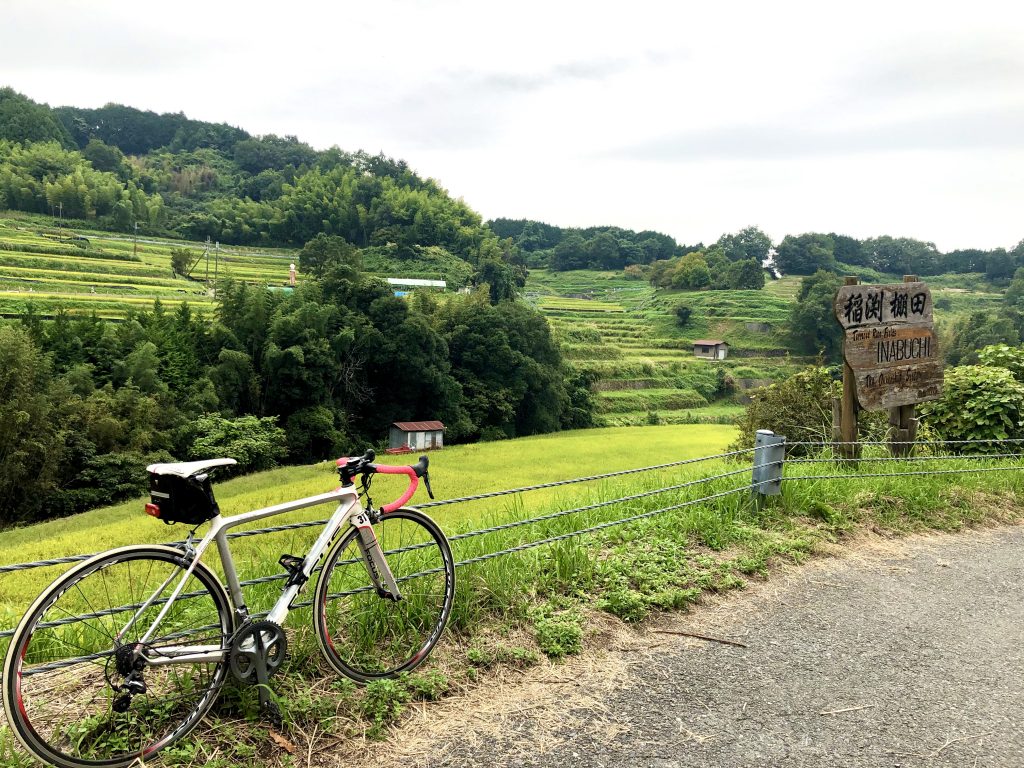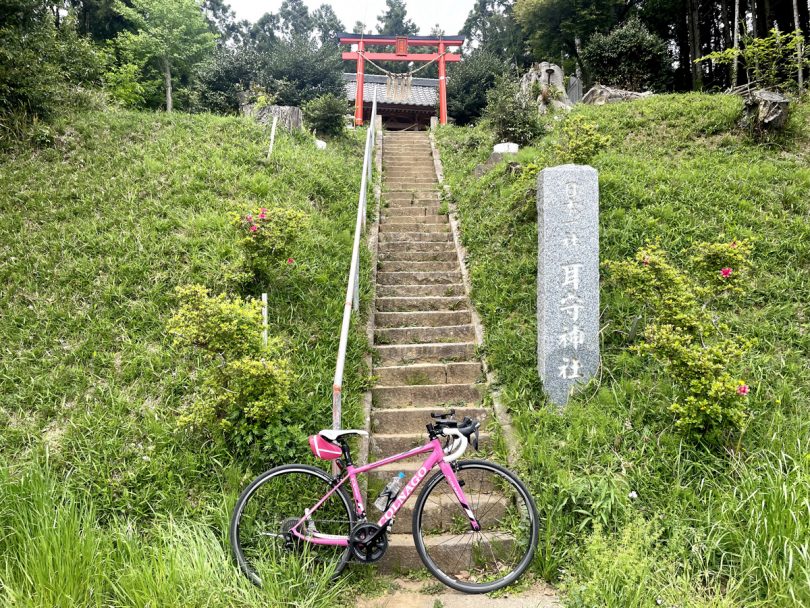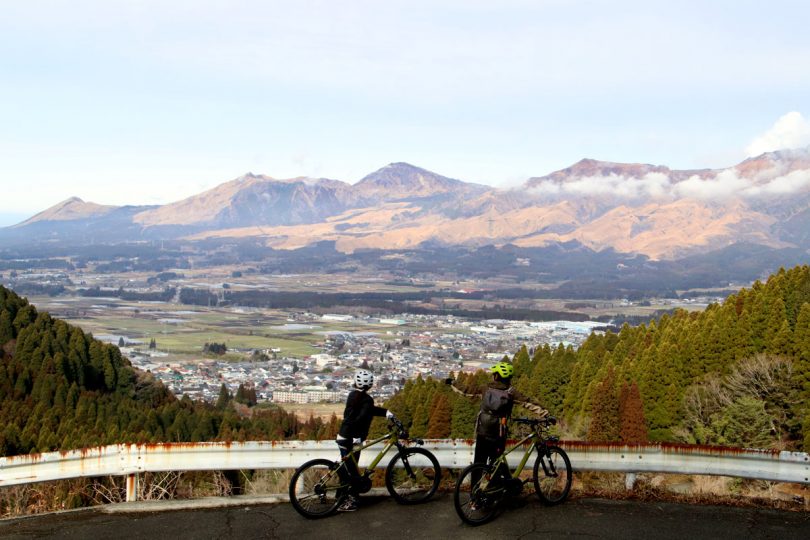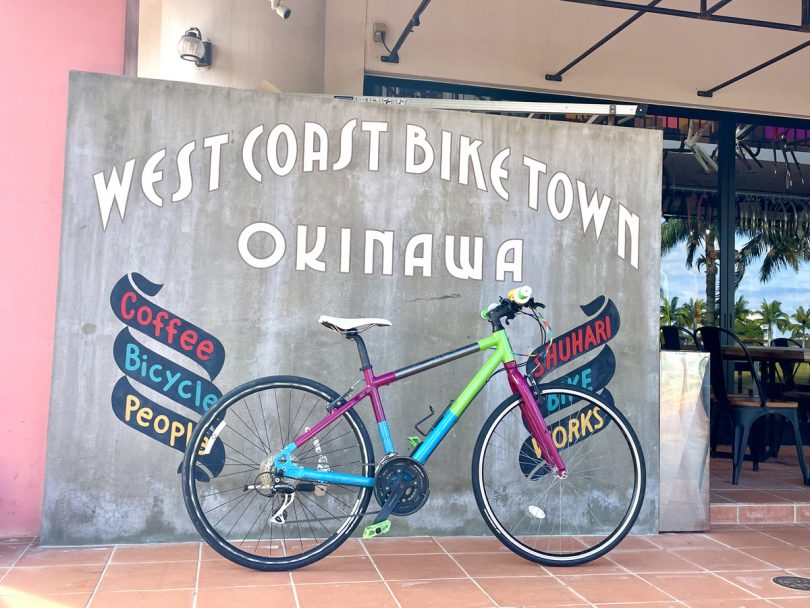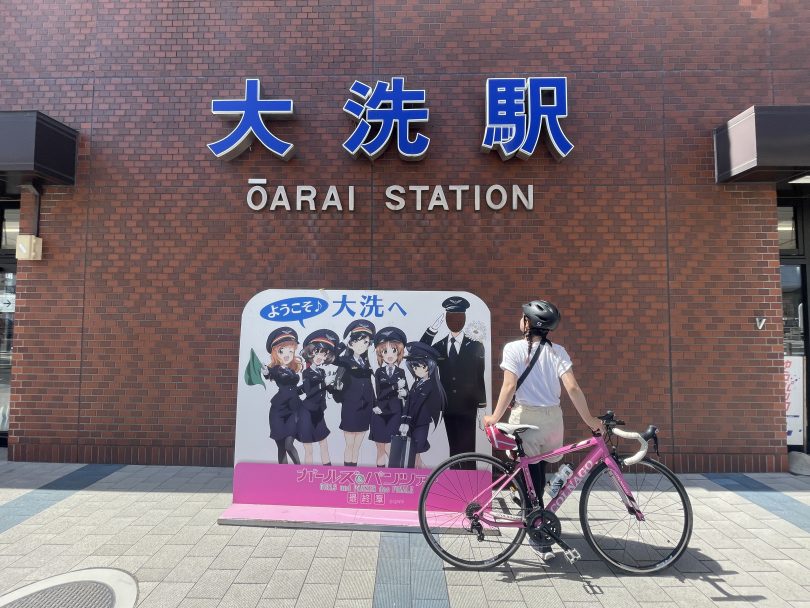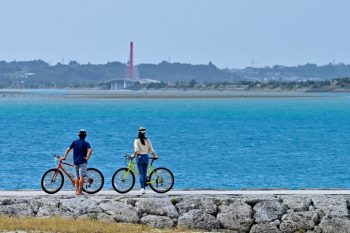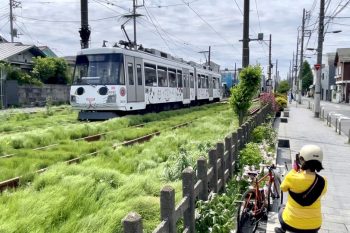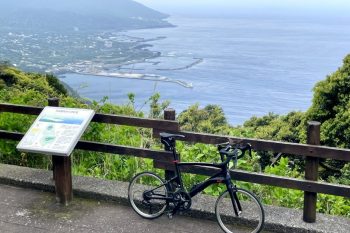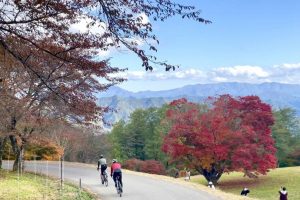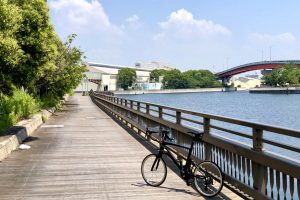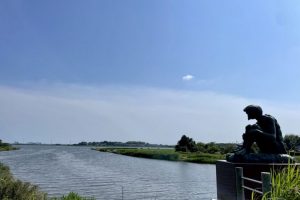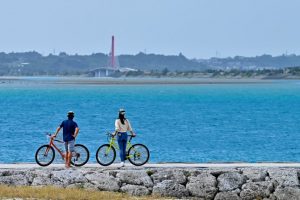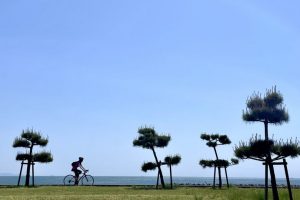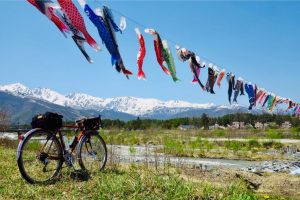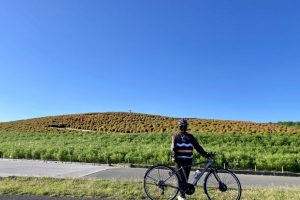Koto ward is located in the eastern part of Tokyo, sandwiched between Sumida River and Arakawa River and facing Tokyo Bay to the south.
Even for those who live in the Tokyo metropolitan area, there are actually many spots in the 23 wards of Tokyo that they do not know about very much. This is the second cycling tour with Ms. Sakai, president of TOKYO SAN-ESU Ltd., a Tokyo-based company that has been engaged in the planning and wholesale of bicycle-related products for many years, under the theme of “discovering the charms of the 23 wards of Tokyo.”
We explored “Koto ward” in January on a mild winter day.
Contents
- Start from Kameido Station North Exit
- Katori Shrine in Kameido, dedicated to the god of sports development
- Kameidoten Shrine, dedicated to Sugawara-no-Michizane
- Funabashiya, the Original Kuzumochi
- Kyu-Nakagawa River
- Fukagawa-meshi at Monzennakacho
- Kiba Park, Museum of Contemporary Art Tokyo (MOT)
- Kameido Umeyashiki
- Course Introduction
- Summary
Start from Kameido Station North Exit
Kameido Station is a station of JR East and Tobu Railway. The tour starts from in front of Atre at the north exit.


Katori Shrine in Kameido, dedicated to the god of sports development
Kameido Katori Shrine is located 700m north of Kameido Station and commands a view of Tokyo Sky Tree over the torii gate.

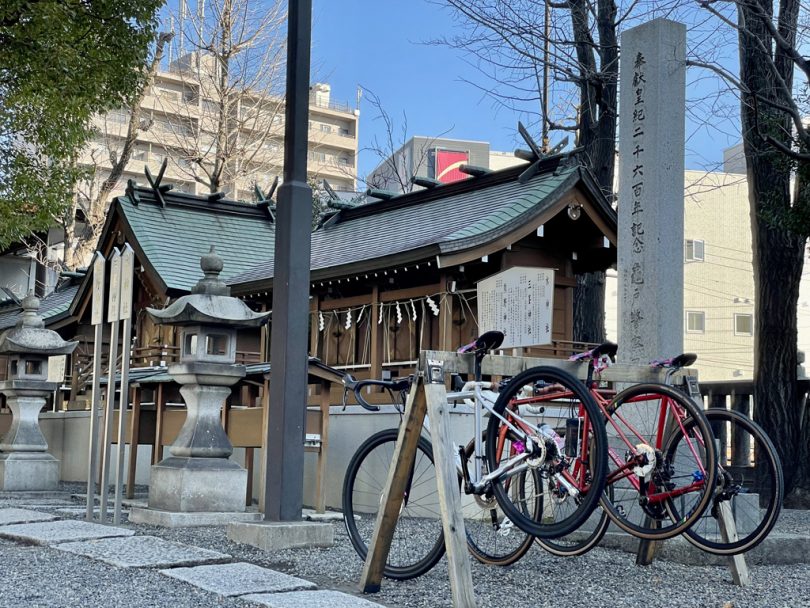
Known as a shrine dedicated to the god of sports development, famous athletes visit this shrine to pray for victory. It is nice that there is a bike rack inside the torii gate.


Rikako Ikee, a swimmer from Edogawa ward, used to train at Kameido and visited here to pray for victory before the Olympics.
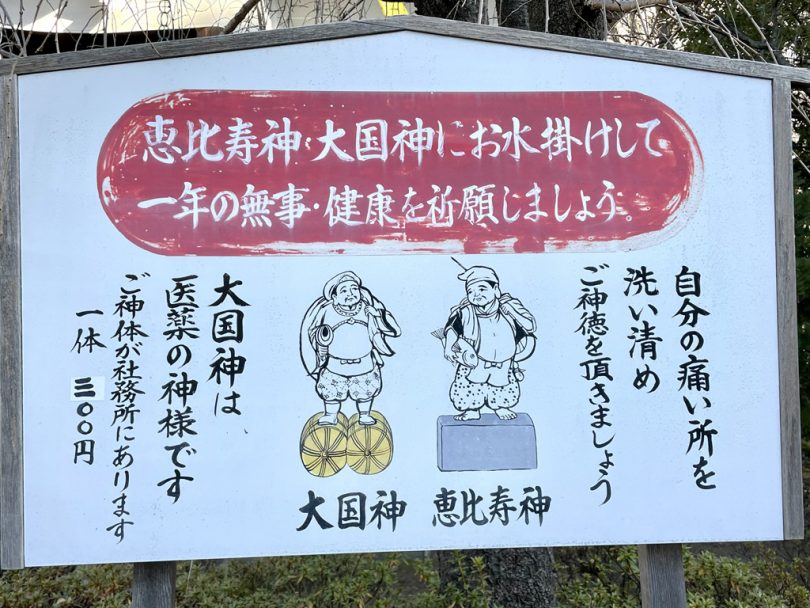
Purify “one’s sore spots” by sprinkling water on Ebisugami and Okuninushinokami.

There is also a monument to “Kameido Daikon.”(”Daikon” is Japanese white radish.)

Kameido daikon is a short-rooted radish with a pointed tip, and was widely grown in this area from the 1860s until the Meiji period (1868-1912).
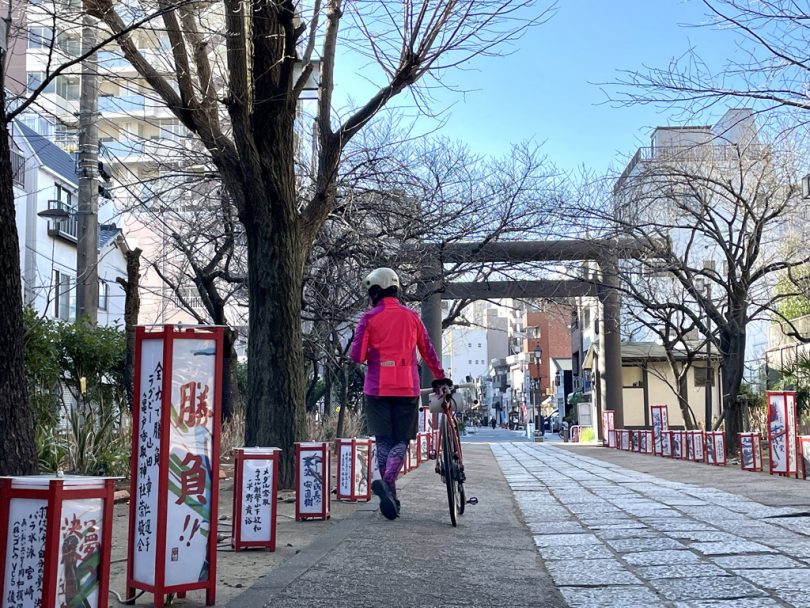
Push your way through the approach to the temple.

Kameidoten Shrine, dedicated to Sugawara-no-Michizane
Kameidten Shrine is about 500m from Kameido Katori Shrine.

Kameidoten Shrine, dedicated to Sugawara-no-Michizane, is popularly called “Kameido no Tenjin-sama” or “Kameido Tenmangu Shrine.”
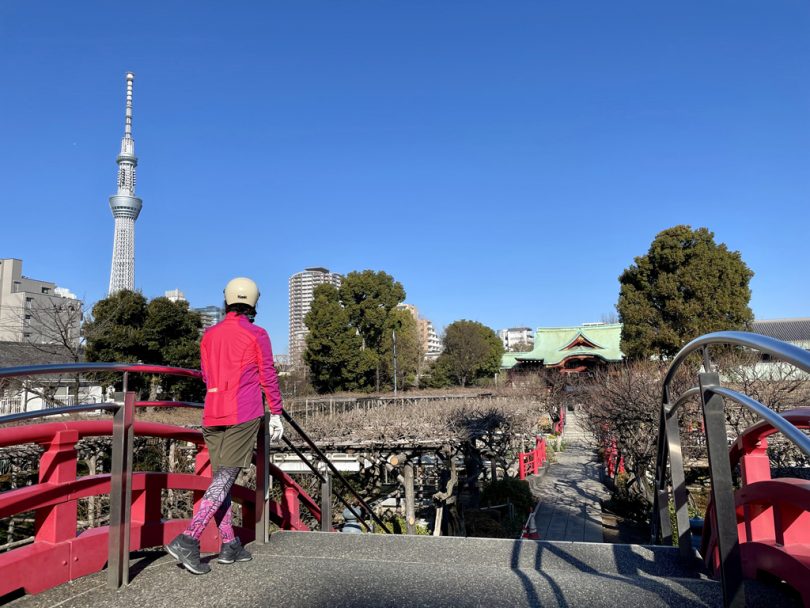
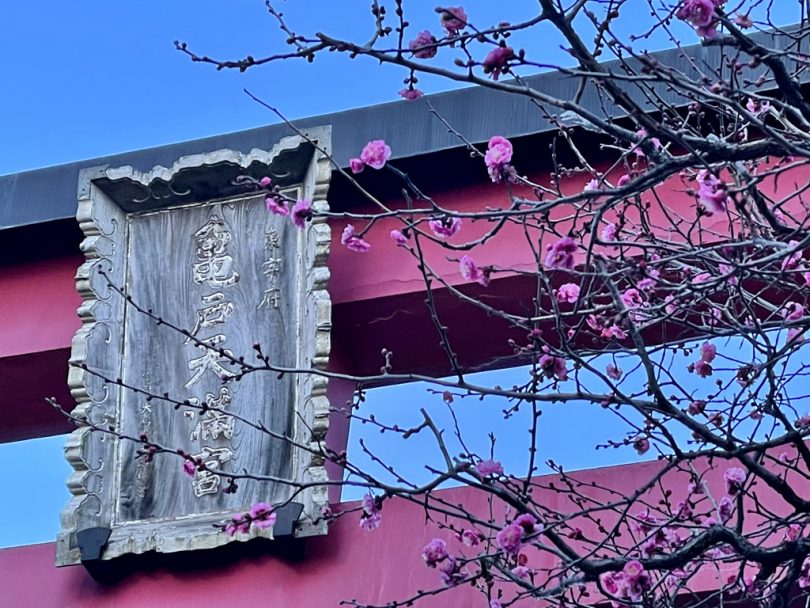
“Plum Festival” is coming soon.

The wisteria (called “Fuji” in Japanese), trellises during “Wisteria Festival” in April will surely be beautiful with “upside-down wisteria Fuji” , like “upside-down Mt.Fuji”.
Funabashiya, the Original Kuzumochi
“Funabashiya” is located near Kameidoten Shrine.
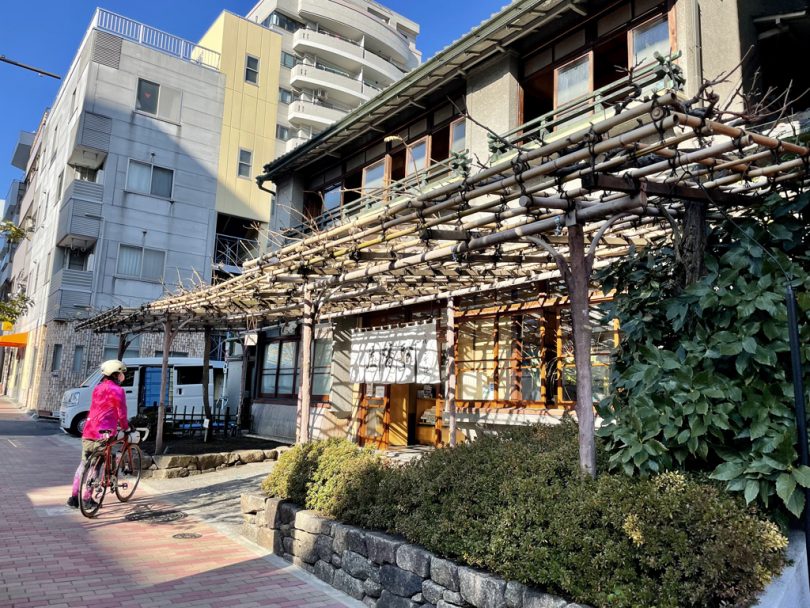

“Funabashiya”,which is famous for its original Kuzumochi, was established in 1805 on the approach to Kameido Tenjin, and is a long-established shop that serves fermented Japanese sweets called Kuzumochi and Anmitsu. In front of the store is a large wisteria trellis. This area is also said to be beautiful in April.
Kuzumochi is available for take-out.
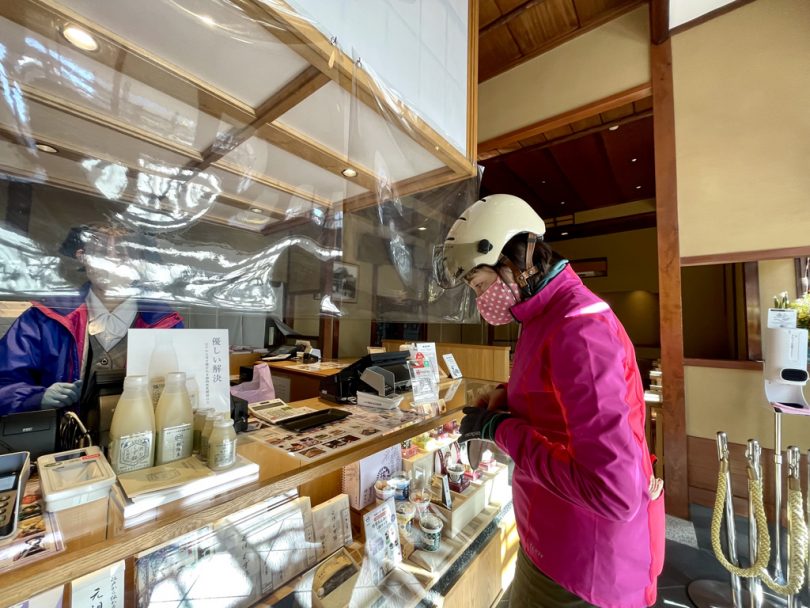
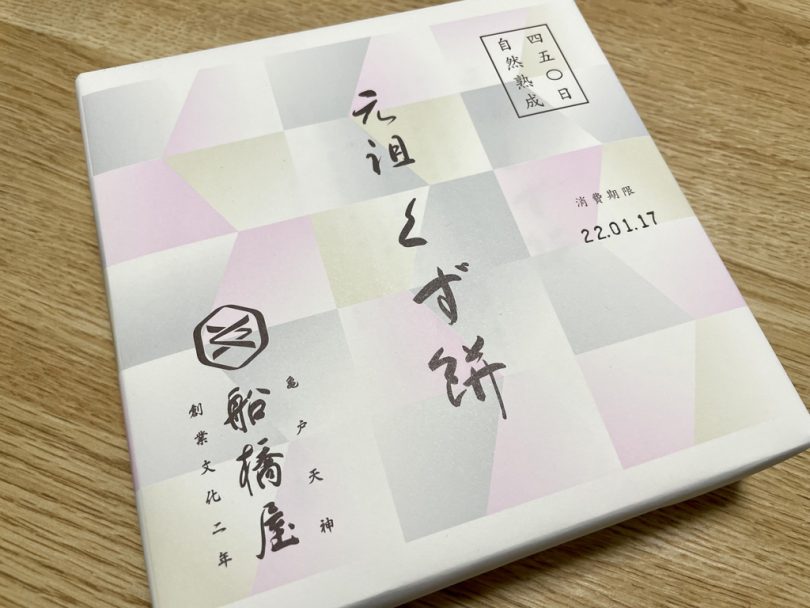
Kyu-Nakagawa River
1.5km east of Funabashiya is Koto Shinbashi Bridge over Kyu-Nakagawa River (Former Nakagawa River).

From here, descend to the riverbed and head south along the river.
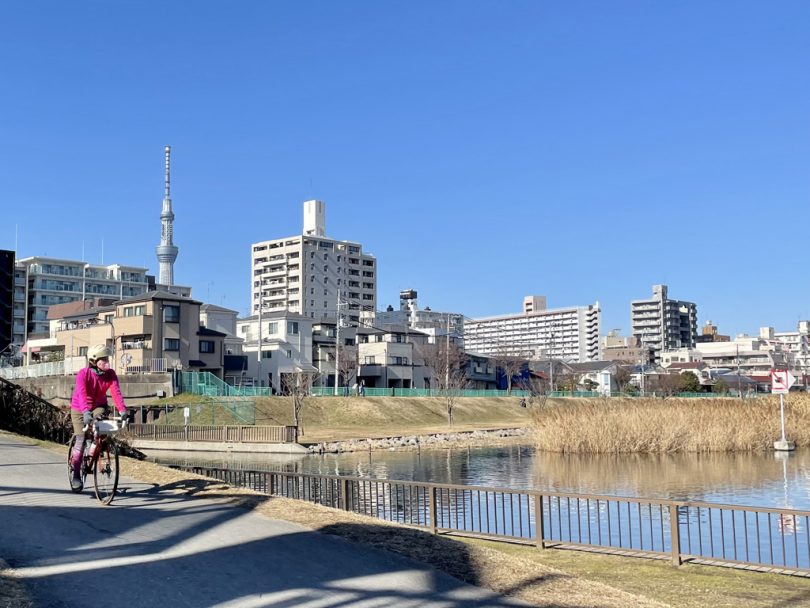


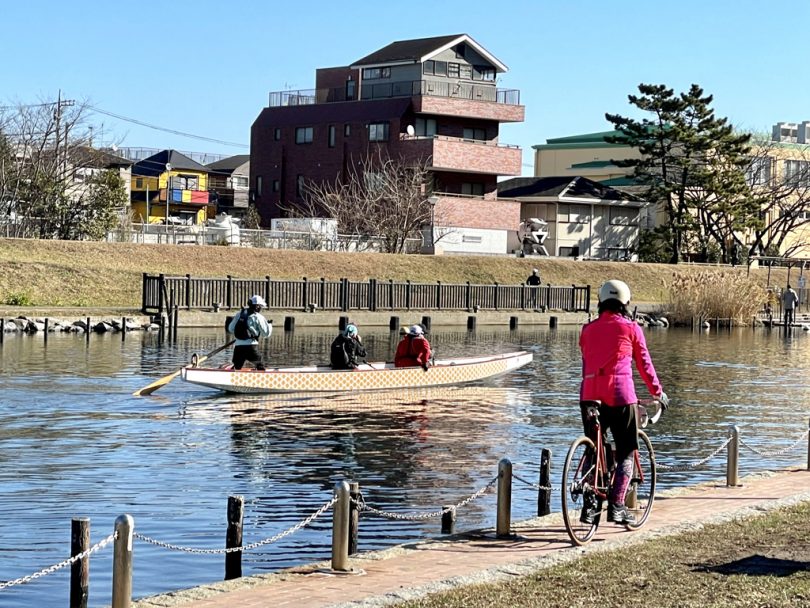
Ride slowly on the unpaved road after the snow melts.
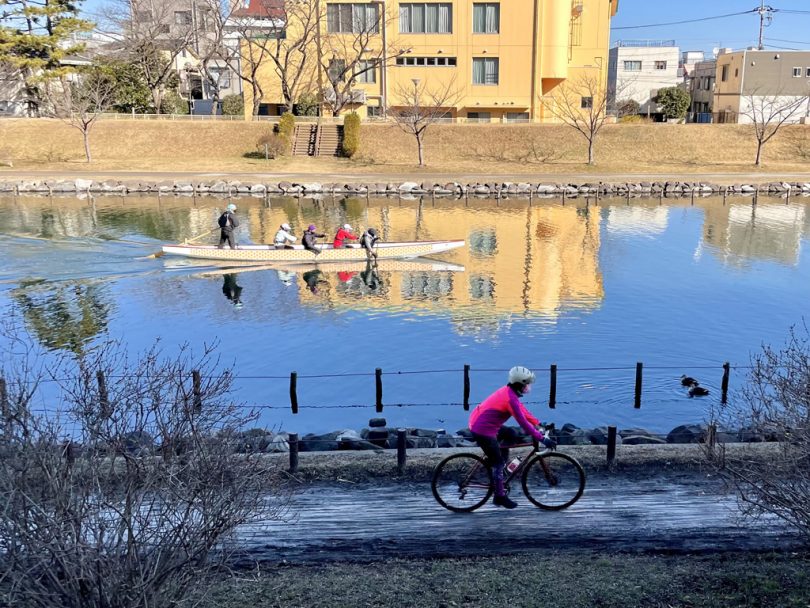
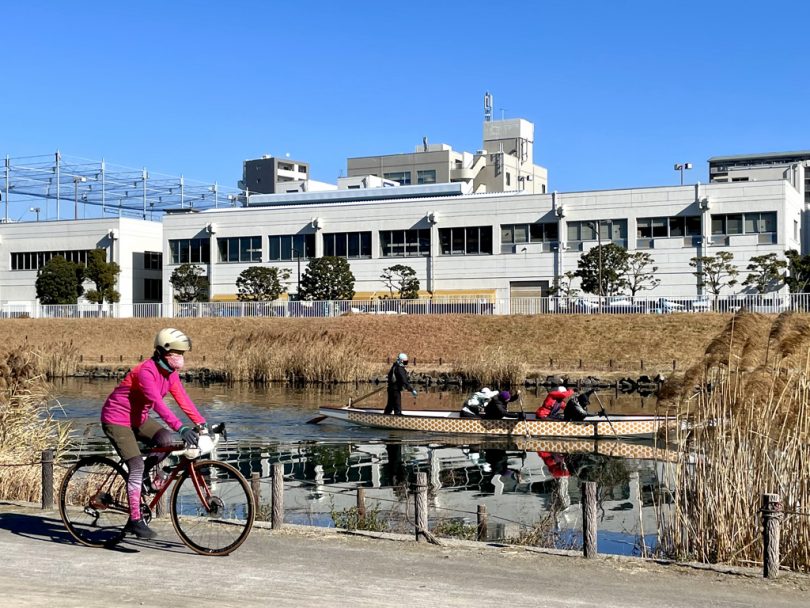
You will see many canoes and dragon boats.
There is a “Kamekobashi Boathouse” under Kamekobashi Bridge, where members of “Kameido Canoe Manpo Club” were.
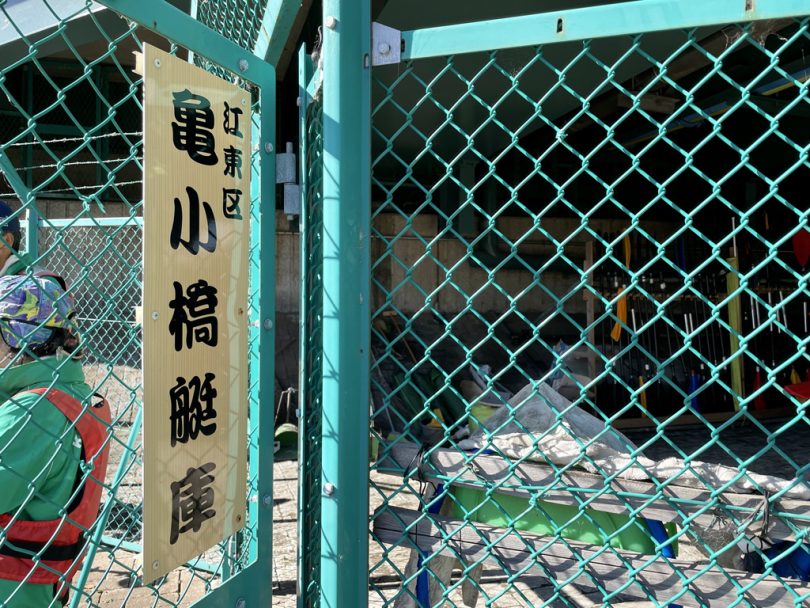

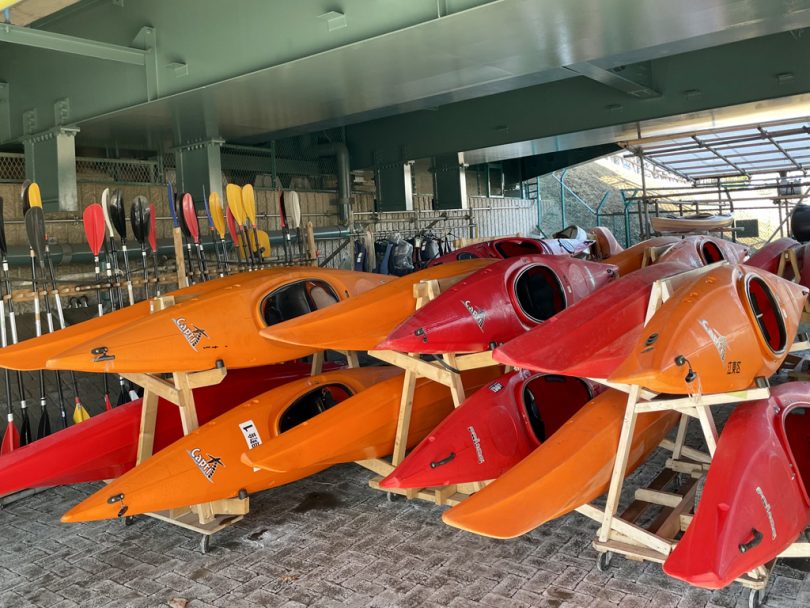

Kyu-Nakagawa River is 6.68km long, a first-class river in Arakawa River system, and is one of the closest waterfront areas to central Tokyo where you can casually canoe and SUP. Kameido Canoe Manpo Club is based here.
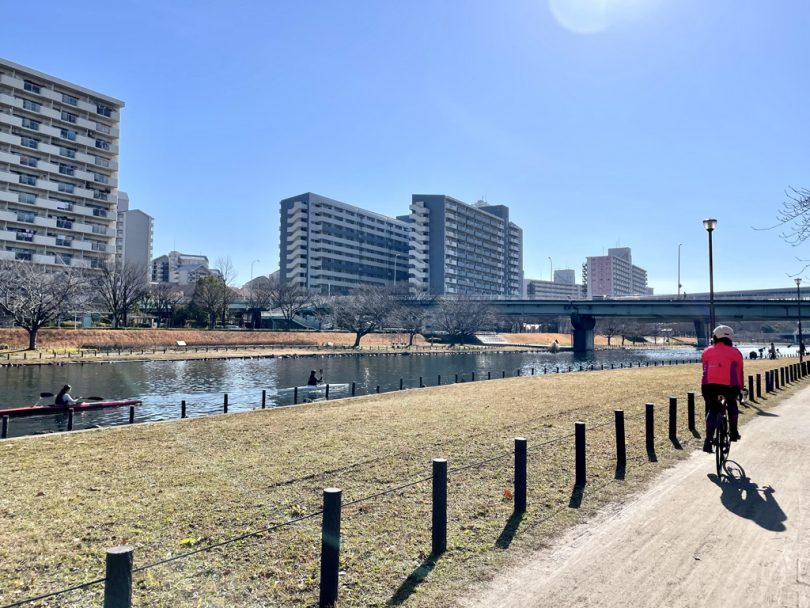

When you arrive at Oshima Komatsugawa Park, head in the direction of Higashi-Oshima Station.


The gold post on the west side of Higashi-Oshima Station on Toei Subway Shinjuku Line is one of the works of “Gold Post Project.”
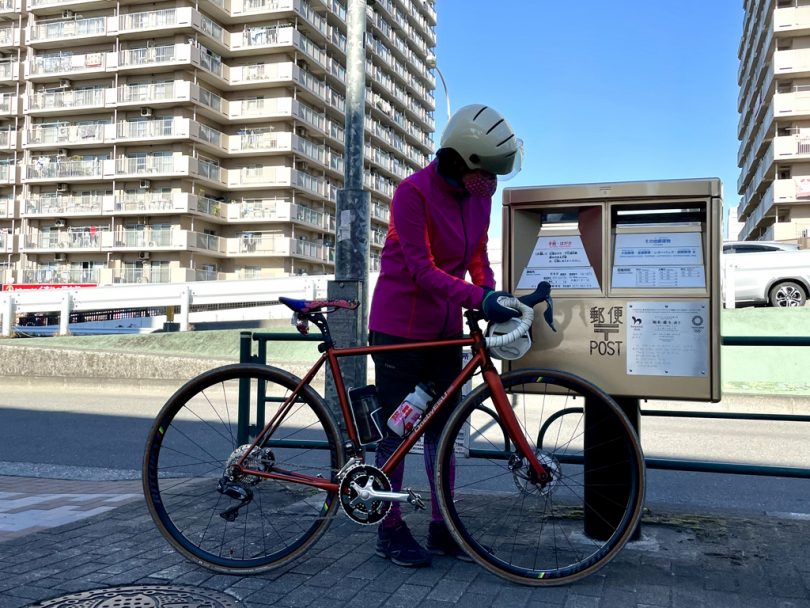
This is a project to honor the glory of the gold medal-winning athletes of the Tokyo 2020 Games by painting mailboxes in areas that are associated with them, and to enliven the areas that have produced the athletes.
Here is a commemorative postbox for skateboarder Yuto Horigome from Koto ward.
Fukagawa-meshi at Monzennakacho

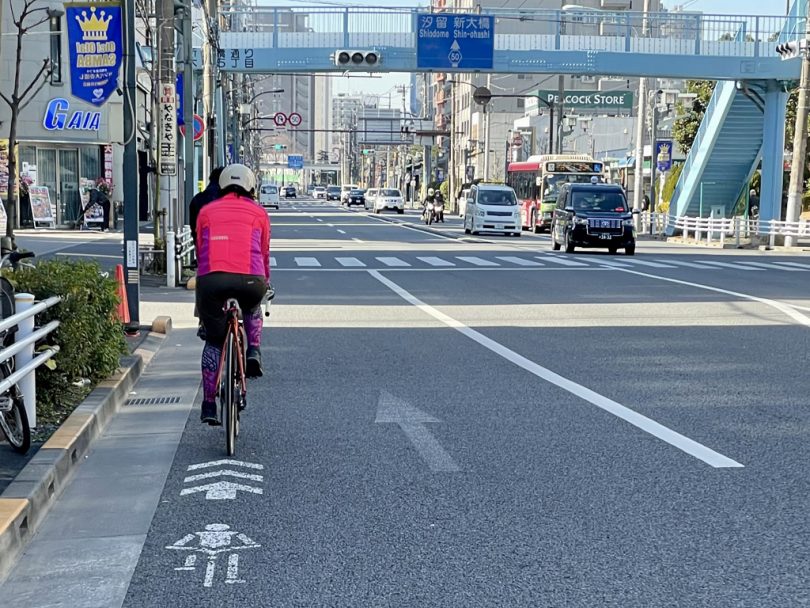
Ride west from Higashi-Oshima Station, south through Morishita Station, and beyond Kiyosumi-Shirakawa to Monzennakacho.
Lunch time here.
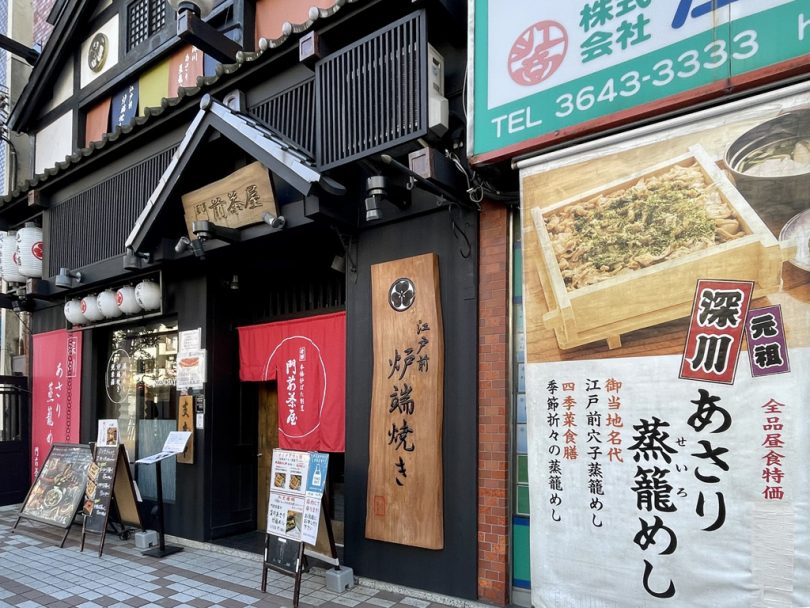
We had lunch at “Monzen Chaya” (“Chaya” means a tea house in Japanese). We ordered “Fukagawa asari clam steamed rice in a basket.”

“Asari-meshi”, asari clam steamed rice, has been a popular dish in Fukagawa. The meal is steamed in a steamer basket and is filled with asari clams.
Kiba Park, Museum of Contemporary Art Tokyo (MOT)
Ride east from Monzennakacho and go north along Heikyu River to Kiba Park.
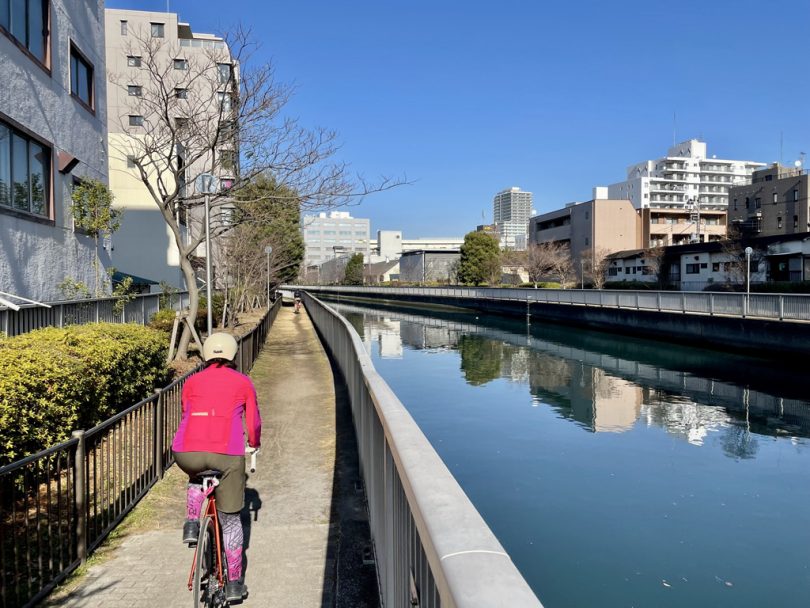
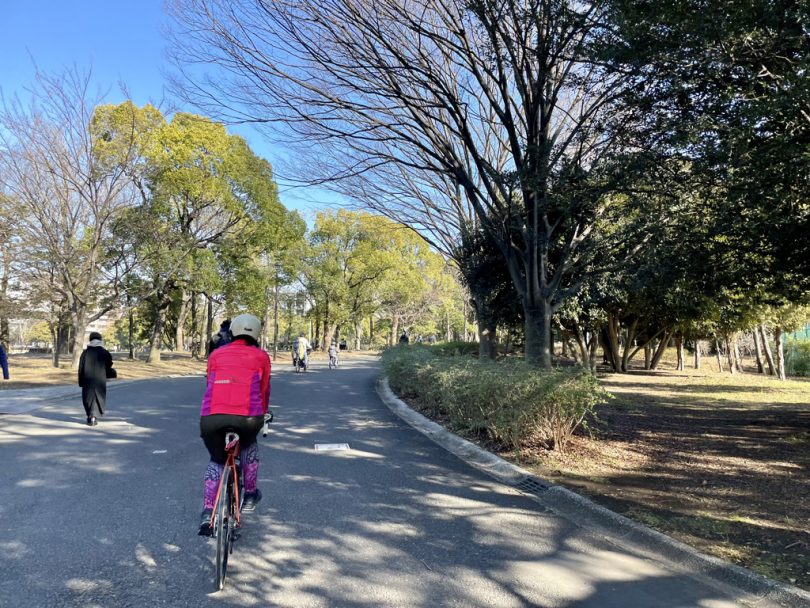
Ride northward along Heikyu River to Kiba Park, and you will come to MOT: Museum of Contemporary Art Tokyo.

Museum of Contemporary Art Tokyo is an art museum specializing in contemporary art that offers a perspective on the flow of postwar and contemporary art in Japan.
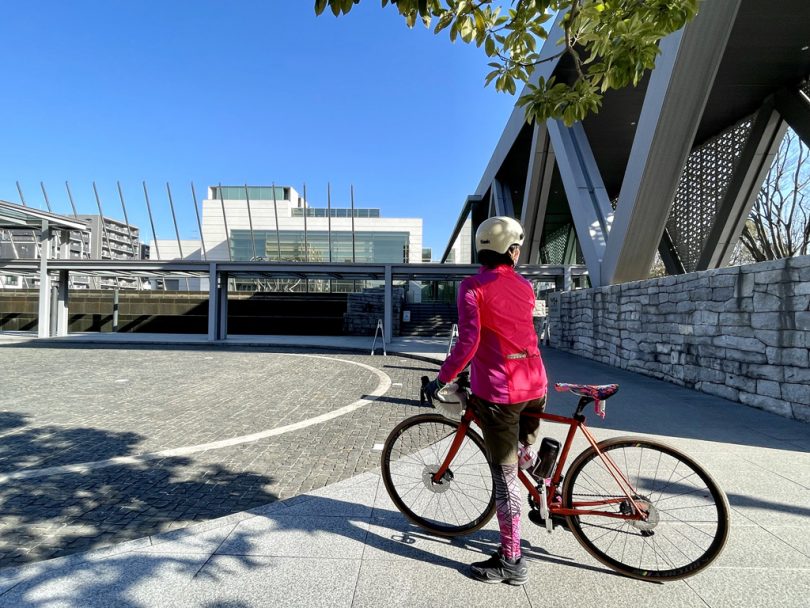

Kameido Umeyashiki
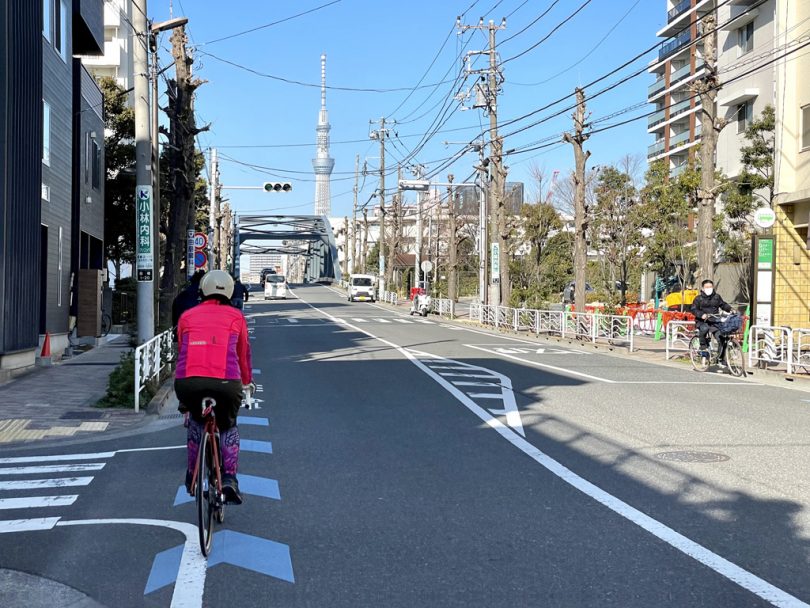
If you return to Kameido Station, less than 4km northeast of MOT, you will find that the north side of the station as a “pedestrian paradise” (car-free zone). Bicycle traffic is allowed, so it is a “bicycle paradise” as well.
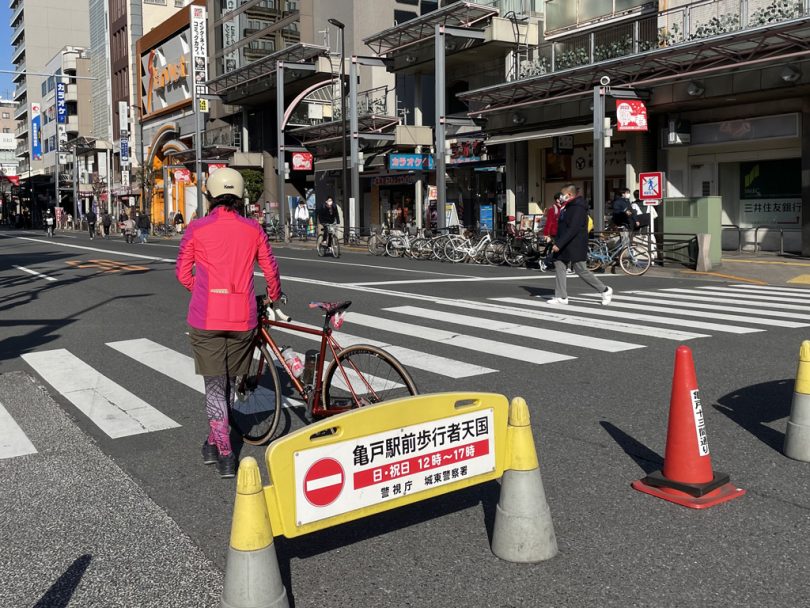

Finally, a short, leisurely and luxurious ride to “Kameido Umeyashiki.”
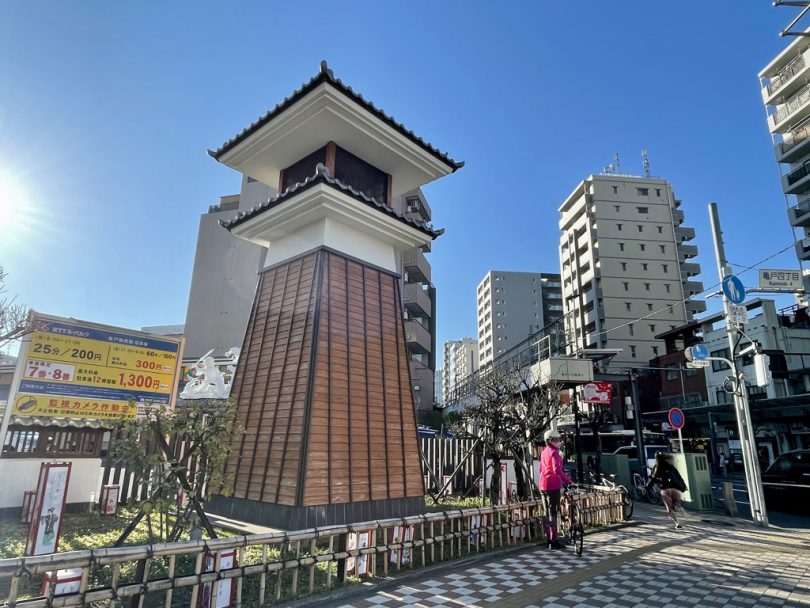

Umeyashiki (plum mansion) actually existed in Kameido, and was even depicted by Ukiyoe artist Hiroshige Utagawa in the Edo period (1603-1868).
Kameido Umeyashiki is a commercial complex with a tourist information center, product stores, and plenty of historical attractions based on the building’s motif.
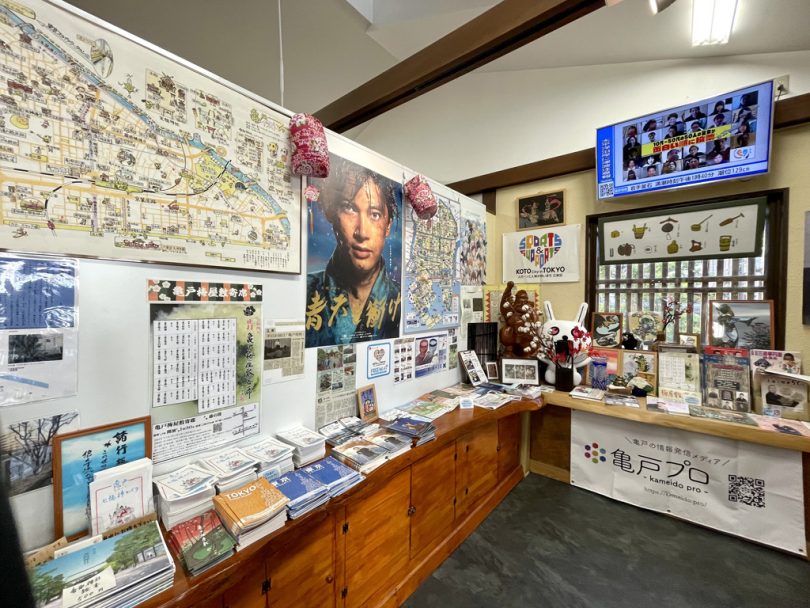
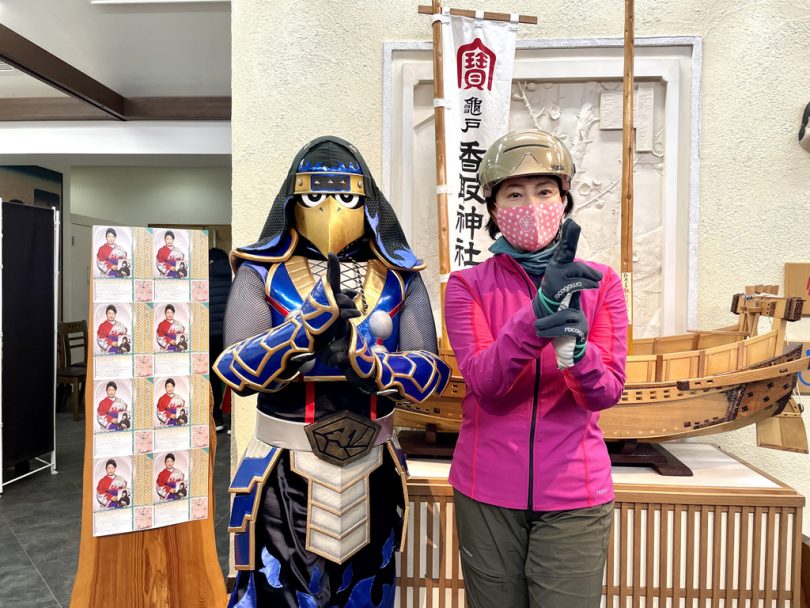
Course Introduction
▼ Gold Post Project
http://www.kantei.go.jp/jp/singi/tokyo2020_suishin_honbu/gold_post_project/index_e.html
Summary
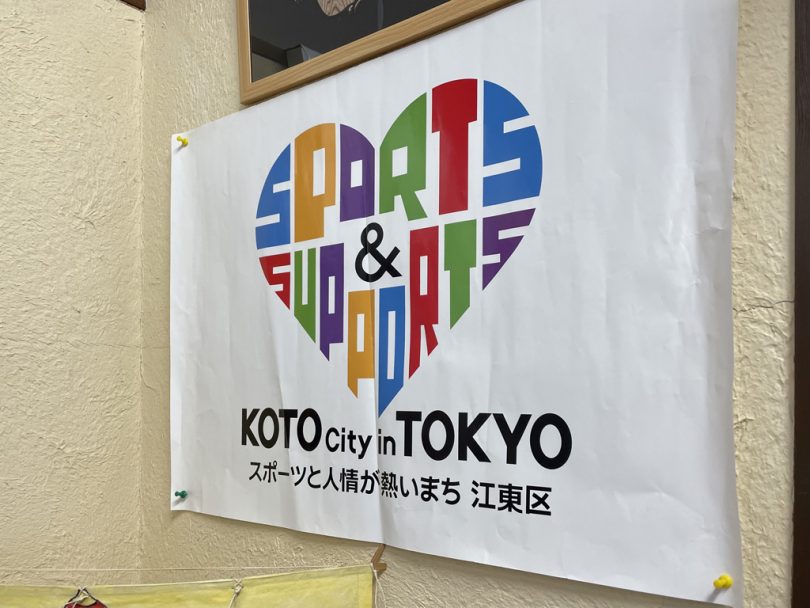
It was warm and mild winter weather. Cycling about 20km in the northern part of Koto ward started with the “god of sports development.” We felt that the area was full of active atmosphere with canoes, dragon boats, sports plazas, etc.,. Koto ward is truly a “town where sports and humanity are hot.”
Feel the wind on your bike, and when you get hungry, eat delicious food. Ride along the riverbeds where cars cannot go, and explore places you cannot go around on foot. Koto ward is a place where you can enjoy the charm of cycling to the fullest.
It was a weekend of fun, and we started to look forward to our next visit to an unknown part of Tokyo.
We encourage you to explore unfamiliar towns by bicycle.
Cooperation: TOKYO SAN-ESU Ltd.
Photo&Text :Hanada (TABIRIN editorial devision)


